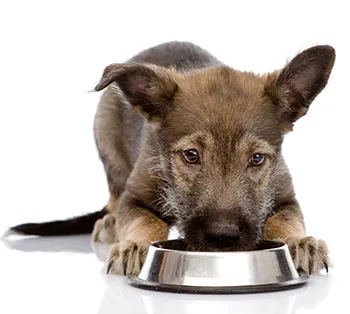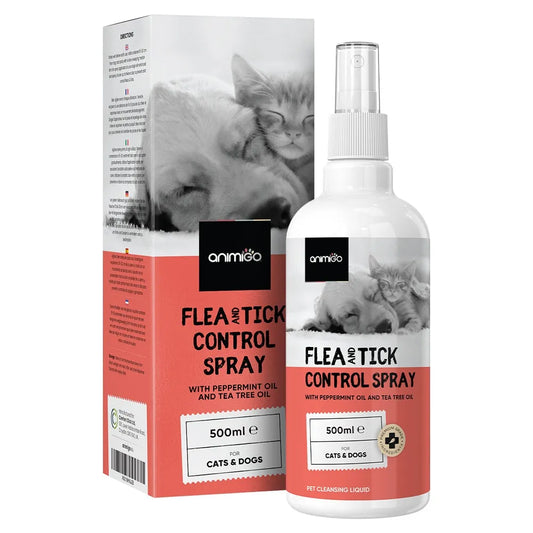Worming in Dogs
Worms are not the most pleasant issue dogs can have, but unfortunately, they can be very common. Dogs have the habit of sniffing around and being inquisitive, and whilst that can be a good thing, when people ask ‘how do dogs get worms?’, this is usually the reason. As unpleasant the thought of worms living inside your dogs are, it is imperative that you take action and get rid of them as soon as possible before they start affecting your dog’s digestion and general wellbeing.
Worms are not the most pleasant issue dogs can have, but unfortunately, they can be very common. Dogs have the habit of sniffing around and being inquisitive, and whilst that can be a good thing, when people ask ‘how do dogs get worms?’, this is usually the reason. As unpleasant the thought of worms living inside your dogs are, it is imperative that you take action and get rid of them as soon as possible before they start affecting your dog’s digestion and general wellbeing.
What are worms in dogs?

Worms are a type of parasites in dogs, meaning they live off of a host. They spread by laying eggs that are passed on through the dog's faeces which can potentially survive for years, making them very hard to completely get rid of or for your dog to avoid. So what do dog worms look like? This depends on the type of worm. Most worms in dogs look very similar, and they’re not particularly something you’d want to be taking a look at! With some types, you can spot the worms in your dog’s faeces, but some others are harder to find.
Types of worms in dogs
Whilst there are numerous around the world, there are generally five different types of worms in dogs that you are likely to come across. Four of these are classed as intestinal worms as, as the name suggests, they live within a dog’s gut and intestinal tract, whilst the fifth lives within the heart and blood vessels.
Roundworm
These are long, white worms that almost look like spaghetti in appearance. Roundworms are usually ingested as eggs where they then grow and mature in the intestinal tract. They can, however, migrate around the body including the lungs and can get stuck in tissues causing cysts. When a dog becomes pregnant, they can then move into a mothers milk glands, which can result in the worms being passed to her puppies.
As a result, roundworms are very common in puppies and gives them a potbellied appearance and can even affect their growth. Adult worms can also produce up to 200,000 eggs in a single day, making them very easy to spread around either through the dog’s body or through their stool. Additionally, their eggs have a hard shell, making them able to live amongst soil for long periods of time. This, in turn, makes them easy to for a dog to catch as simply sniffing, licking or rolling around in a contaminated area can cause the eggs to stay on their fur or paws to then be ingested later.
Tapeworm
One of the most well-known types of worms in dogs, your dog will get tapeworms by ingesting raw animal flesh that contains the tapeworm cysts or by eating an intermediate host such as a flea. A person can also contract a tapeworm in the same way, but it is far less common. Tapeworms are very long, around 4 to 5 inches in length, and flat in appearance. They live within a dog’s small intestines and use six tiny rows of teeth to latch onto the intestines wall and absorb nutrients from foods the dog digests. For an active dog, you may not even realise they have a tapeworm until it is excreted as there will be enough feed both, so you will most likely figure it out by seeing it in their faeces where it splits into small segments that look similar to grains of rice.
Hookworm
Hookworms in dogs are very common across Europe, although less in the UK, and are small, thin parasites that survive by hooking themselves onto the walls of the small intestines and sucking the dog’s blood. As a result of this, they can be especially dangerous for some dogs, especially puppies, as they can steal required nutrients and even make them anaemic. A hookworm infection can also cause issues and can be a cause of illness in older dogs. Dogs can get hookworms from coming into contact with the larvae found in contaminated soil as well as from ingesting their eggs. Similarly to roundworms, puppies can also get hookworm via their mother's milk.
Whipworm
Although these aren’t as common in the UK as other types of worms, they're still important to know about when it comes to understanding worms in dogs. Whipworms live in the cecum, the initial part of a dog’s large intestines and are usually less noticeable than other types as they don’t take as many nutrients and produce fewer eggs. As a result, they don’t cause as many issues for dogs as long as they don’t burrow into their intestinal tissue. This does, however, make them harder to diagnose and spot in the stool.
Lungworm
Whilst lungworms are not an intestinal worm like the others, they’re still parasites that live off of their host. A dog can get lungworms by eating larvae found within infected slugs, snails and frogs. Once ingested, the larvae grow inside the dog until they are mature when they then move around the body, usually within the blood vessels and heart that supply the lungs. As a result, they can cause some serious issues for your dog including breathing and heart problems. They can then begin producing their own larvae, causing even more issues that can be potentially fatal if left untreated.
Worming in dogs overview
| Worm type | How do dogs get it? | What does it look like? | Where does it live? | Worm-specific symptoms | |
|---|---|---|---|---|---|
| Roundworm | Ingested as eggs found within the soil | Long and white like spaghetti | Dog’s intestines | Coughing and abdominal pain | |
| Tapeworm | Eating infected fleas or raw meat | Long (4-6 inches) and flat | Dog’s small intestines | Weight loss | |
| Hookworm | Ingesting eggs or being in contact with larvae | Small and thin | Dog’s small intestines | Coughing and anaemia | |
| Whipworm | Ingesting their eggs | Pieces of thread with an enlarged end | Cecum (large intestines) | Weight loss | |
| Lungworm | Eating larvae in slugs, snails or frogs | Slim and around 2.5cm in length | Heart and blood vessels | Coughing |
What causes worms in dogs?
Intestinal worms in dogs can infect your dog in a number of ways. This depends on the type of worm, however, you should be aware of all the possible methods for a dog to end up with any sort of worm so that you can either avoid it or take sensible precautions. Some may be easier to avoid than others though, but it is important that you do what you can to stop your dog from getting worms. The ways your dog can be infected by worms are via:
- Eggs or larvae in contaminated soil
- Infected carcasses or raw meat (e.g rodents and birds)
- Infected intermittent hosts (e.g fleas)
- Mother’s milk
- Infected slugs, snails or frogs
Symptoms of worms in dogs
If you’re not sure whether your dog does have any kind of worms, there are some common signs of worms in dogs you can look out for. As each worm is different and lives and survives in different ways, there are certain distinct symptoms such as coughing, seizures and worms in dogs skin, but in general here are the typical symptoms of worms in dogs that should notify you of an issue:
- Worms in stool
- Diarrhoea
- Vomiting
- Lethargy
- Dull coat
- Swollen abdomen (potbelly)
- Dehydration
- Nutritional deficiency
- Bottom scooting
- Flaky skin
How to get rid of worms in dogs

If you do discover your dog has worms, firstly, don’t panic! If you think it may be causing some serious issues then take your dog to the vet straight away for professional diagnosis and treatment. If you catch it early enough before it gets too serious, however, you can first try some home remedies for getting rid of worms in dogs. It is said that certain foods can help as these can support your dog’s digestive and immune systems. This includes fresh foods such as pumpkin seeds, grated carrot, watercress, cucumber, pineapple, papaya and pomegranate as well as typical store cupboard foods such as garlic, apple cider vinegar, coconut oil and bone broth. Fermented foods, such as sauerkraut or kimchi, are also said to be useful as these can aid the gut’s immunity.
These are also ideal to use as a preventative method to reduce the risk of worms causing issues in the future. If you can’t get all these foods into your dog’s daily diet, or you just prefer to give them ready-made dog food, then there are still ways to help! There are many products available on the market that are made using precise measurements of plant-based ingredients and work as a pet intestinal hygiene supplement to keep your dog worm-free.
How to treat worms in dogs
In addition to natural methods to help deal with worms, there are also plenty of dog worm treatments available to help with worming your dog. These work by killing any worms, and ideally any eggs or larvae, in your dog’s system. Depending on the severity of the worm infestation as well as the type, however, it is often the case that dogs will need worming several times before they’re completely gone. You can also get dog worming products that you can give on a regular basis in addition to getting checked for worms by your vet in order to try and prevent them from occurring.




















